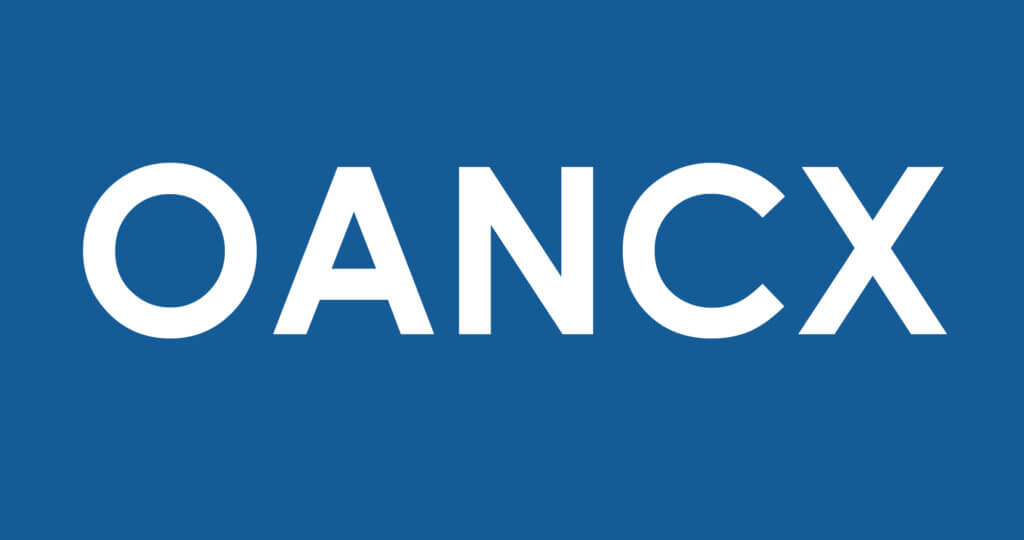Oakmark Equity and Income Fund - Investor Class
Average Annual Total Returns 09/30/12
Since Inception 11/01/95 10.57%
10-year 8.75%
5-year 3.77%
1-year 17.19%
3-month 3.27%
Gross Expense Ratio as of 09/30/11 was 0.77%
Past performance is no guarantee of future results. The performance data quoted represents past performance. Current performance may be lower or higher than the performance data quoted. The investment return and principal value vary so that an investor’s shares when redeemed may be worth more or less than the original cost. To obtain the most recent month-end performance data, view it here.
Quarter Review
Despite the pervasive tendency for investors to reduce equity exposure while increasing their fixed-income commitments, equity markets rebounded in the September quarter, and fixed-income markets were directionless. For the three months, the Equity and Income Fund earned 3%, which contrasts to a 5% gain for the Lipper Balanced Fund Index, the Fund’s performance benchmark. For the calendar nine months, the returns are 8% for the Fund and 11% for the Lipper Index. Finally, for the Fund’s fiscal year ending September 30, the return to the Fund was 17%, while the Lipper Index returned 18%. The annualized compound rate of return since the Fund’s inception in 1995 is 11%, while the corresponding return to the Lipper Index is 7%.
Diageo, Cenovus Energy, Flowserve, Dover and Nestle contributed the most to return in the quarter. The largest detractors were Walter Energy, United Health Group, Staples, FedEx, and CR Bard. During this calendar year, the most significant detractors have been Walter Energy, Staples, Varian Medical Systems, Patterson-UTI Energy and Lear. The largest contributors to portfolio return during the past nine months were Diageo, Scripps Networks Interactive, TJX, Flowserve and Philip Morris International. Finally, for the Fund’s fiscal year, the largest contributors were Diageo, Flowserve, Philip Morris International, TJX and Scripps Networks Interactive. The largest 12-month detractors were Walter Energy, Staples, Hospira, Lear and Republic Services (sold).
Transaction Activity
The quarter’s trading activity in the Fund was modest, at least in terms of new purchases or eliminations. The two eliminations were Steris and Republic Services. Steris was a successful smaller holding, and I sold it both for valuation reasons and because of the company’s exposure to the hospital capital equipment market in a period of rapid change in the health care sector. We believed that the improvement in the U.S. industrial economy would support Republic Services’ earnings, but recent trends do not justify that thesis, which dictated the sale of the holding.
The Fund’s only new purchase was Bruker, a diversified scientific instrument manufacturer with a strong reputation for innovation and product quality. The company’s management team holds large ownership stakes and focuses on growth in intrinsic value per share over the long term. To that end, we think management is willing to make sensible elective investments in the business that promise returns only well into the future, and this factor often discourages investor interest. Earlier this year, the company hired a new chief financial officer who appears to have the necessary skills and experience required to transform the company from one known primarily for its technical excellence to one also known for its financial attributes.
Cape of Good Hope?
In the September 17 edition of the Financial Times, columnist John Authers discussed the evolution of Yale Professor Robert Shiller’s “Cape” indicator. “Cape” is an acronym for “cyclically adjusted price earnings” ratio. This indicator compares the price of a stock to its average earnings over the preceding decade. When valuing stocks, most investors use forward-looking price-to-earnings ratios that depend on the ability to make reasonable forecasts of future earnings. Obviously, forecasting errors are frequent, but never more so than when the economy is approaching recession. By using a backward-looking model that covers a long time period, Shiller avoids forecasting error while capturing data that describe a company’s performance through a variety of economic environments.
Although Shiller’s model has proven to be helpful in identifying market extremes, it has been less valuable in more normal times. Accordingly, he has refined his concept to provide more market-timing guidance as well as industry-relative rankings. For the Equity and Income Fund, it is the industry analysis that is most revealing. Shiller’s work looks at the history of the 10 main market sectors of the S&P 500 Index. As one would expect, different sectors have different Capes. Shiller’s concept is to look at each sector relative to its own history and determine which are trading dear to that history and which are cheap. According to Authers, current industry Capes suggest that industrial, energy and health care stocks offer good value, while industries typically seen as defensive (e.g., consumer staples) are expensive. The three sectors that are most overweight in the Fund versus the S&P 500 are industrials, energy and health care. At Harris Associates, we pay little attention to the industry weights in the S&P 500, and I did not construct the Fund portfolio with the Shiller Cape in mind. Nevertheless, it should not be surprising that our value philosophy would cause the portfolio to end up in the Cape’s cheapest neighborhoods.
Why own TIPS today?
For the majority of its existence, the Equity and Income Fund has had an invested position in U.S. Treasury inflation-protected securities, often referred to by their acronym TIPS. In general, this asset type has been good to the Fund, but at today’s price levels, investors are beginning to ask why we continue to own any. Before arriving at the answer, we should first review the exact nature of this security.
TIPS represent a loan to the U.S. government at a specified interest rate (the bond’s coupon) and a multiplier that amplifies (or diminishes in the event of deflation) the face value of the bond based on a formula containing “chained CPI” (a variant of the Consumer Price Index). Every month, the government provides an index value of a basket of items, which is then used to calculate the “Index Ratio.” This ratio incorporates a Reference CPI statistic and an inflation assumption. For example, were you to purchase a TIPS bond for $100 and the Index Ratio is 1.1, your cost for the bond would be $110 (ignoring any accrued interest). This value, inclusive of the Index Ratio multiplier, is realized at maturity or at time of sale.
Currently, the Equity and Income Fund has approximately $1.5 billion invested in TIPS, plus a small holding of Canadian inflation-indexed securities. This allocation accounts for more than 35% of the Fund’s fixed-income assets (ignoring short-term investments). More importantly, the TIPS position comprises the bulk of the portfolio’s longer duration assets. Looking at the portfolio today, one sees that the TIPS all show “negative yields,” which naturally concerns Fund investors. This yield is somewhat misleading; however, as it is calculated using the current trading price for the bonds and their stated coupons without incorporating the value added by the Index Ratio multiplier. Taking the Index Ratio into account, we calculate TIPS to be yielding roughly the same as their conventional Treasury bond counterparts. It is this added feature, which protects and compensates the investor for inflation that compels us to own these bonds. In our opinion, forecasting future interest rates, especially for more distant maturities, is very difficult. What we do know is that the Federal Reserve is currently employing policies that historically have generated inflationary outcomes. Federal Reserve Chairman Bernanke has stated that he will stave off deflation with massive liquidity injections into the fixed-income markets. The latest such effort was announced on September 13. Since we see future inflation to be the great risk facing the fixed-income investor, we own TIPS to reduce our exposure to that risk. In closing, I wish to thank John Tansey of our firm’s fixed-income department for his assistance in writing this section.
Once again, I thank my fellow shareholders for investing in the Equity and Income Fund. I welcome your comments and questions.
As of 9/30/12 Diageo ADR represented 3.1%, Cenovus Energy, Inc. 3.1%, Flowserve Corp. 2.4%, Dover Corp. 2.5%, Nestle SA 3.3%, Walter Energy, Inc. 0.5%, UnitedHealth Group, Inc. 3.2%, Staples, Inc. 1.2%, FedEx Corp. 1.9%, CR Bard, Inc. 1.5%, Varian Medical Systems, Inc. 1.8%, Patterson-UTI Energy, Inc. 0.4%, Lear Corp. 0.9%, Scripps Networks Interactive, Inc., Class A 2.1%, The TJX Cos., Inc. 1.5%, Philip Morris International, Inc. 3.1%, Hospira, Inc. 0.6%, Republic Services, Inc. 0%, Steris Corp. 0%, and Bruker Corp. 0.2% of the Oakmark Equity and Income Fund’s total net assets. Portfolio holdings are subject to change without notice and are not intended as recommendations of individual stocks.
The Lipper Balanced Fund Index measures the performance of the 30 largest U.S. balanced funds tracked by Lipper. This index is unmanaged and investors cannot invest directly in this index.
The S&P 500 Index is a broad market-weighted average of U.S. blue-chip companies. This index is unmanaged and investors cannot actually make investments in this index.
Equity and Income invests in medium- and lower-quality debt securities that have higher yield potential but present greater investment and credit risk than higher-quality securities, which may result in greater share price volatility. An economic downturn could severely disrupt the market in medium or lower grade debt securities and adversely affect the value of outstanding bonds and the ability of the issuers to repay principal and interest.
The discussion of the Fund’s investments and investment strategy (including current investment themes, the portfolio managers’ research and investment process, and portfolio characteristics) represents the Fund’s investments and the views of the portfolio managers and Harris Associates L.P., the Fund’s investment adviser, at the time of this letter, and are subject to change without notice.






